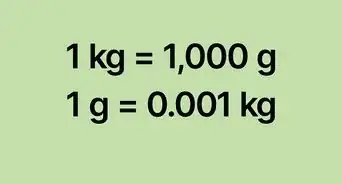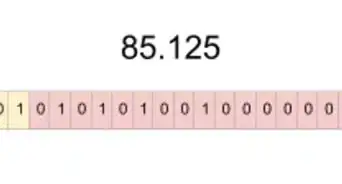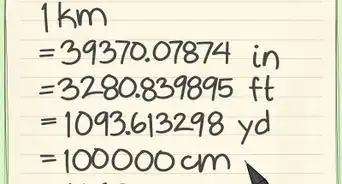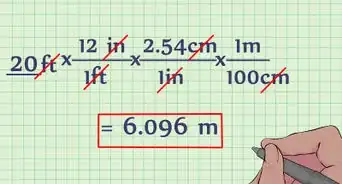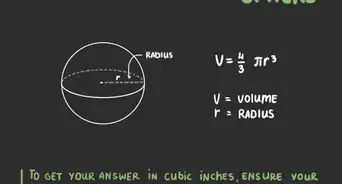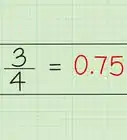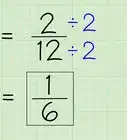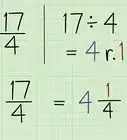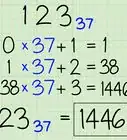This article was co-authored by Grace Imson, MA. Grace Imson is a math teacher with over 40 years of teaching experience. Grace is currently a math instructor at the City College of San Francisco and was previously in the Math Department at Saint Louis University. She has taught math at the elementary, middle, high school, and college levels. She has an MA in Education, specializing in Administration and Supervision from Saint Louis University.
There are 11 references cited in this article, which can be found at the bottom of the page.
This article has been viewed 488,248 times.
Fractions and decimal numbers are simply two different ways of representing numbers that are less than one. Since any number below one can be represented with either a fraction or a decimal, there are specific mathematic equations that allow you to figure out what the equivalent of a fraction would be in decimal form, and vice versa.
Steps
Understanding Fractions and Decimals
-
1Understand the parts of a fraction and what they represent. The fraction consists of three parts: the numerator, which is the top part of the fraction,[1] the slash, which goes between the numbers, and the denominator, which is the bottom part.[2]
- The denominator represents how many equal parts there are in the whole. For example, a pizza might be cut into 8 pieces. The denominator for the pizza would then be "8". If you cut the same pizza into 12 slices, then the denominator would be 12. Either way they represent the same whole, just cut up differently.[3]
- The numerator represents a part, or parts, of the whole. One slice of the whole pizza would be represented by the numerator "1". Four slices would be represented by the numerator "4".
-
2Understand what a decimal number represents. Decimals do not use a slash to indicate what part of the whole they represent. Instead, the decimal point to the left of the numbers signifies that the numbers are below one. With a decimal, the whole is considered to be based on 10, 100, 1000, etc, depending on how many spaces to the right of the decimal the number goes.[4]
- Decimals are also often read in a way that demonstrates their similarity to fractions. For example, 0.05 would commonly be read aloud as "five-hundredths," the same as 5/100. The fraction is represented by the numbers placed to the right of the decimal point.
Advertisement -
3Understand how the fractions and decimals are related. Fractions and decimals are only differing representations of any value that is less than one. The fact that both are used for many of the same things means that you will often need to convert them in order to add, subtract, or compare them.[5]
Converting Fractions to Decimals Using Division
-
1Think of a fraction as a math problem. The easiest way to convert a fraction to a decimal is to read the fraction as if it were a division problem, with the number on the top being divided by the number on the bottom.[6]
- The fraction 2/3, for example, can also be stated as 2 divided by 3.
-
2Divide the numerator of the fraction by the denominator of the fraction. You can do this math problem in your head, especially if the numerator and denominator are multiples of each other, with a calculator, or with long division.[7]
- A simple way to do this is to simply put the divisor (for example, 2 is the divisor in 1 divided by 2) on the bottom and the dividend (1 is the dividend in 1 divided by 2) on top. So, 1 divided by 2 would equal one half (1/2)
-
3Double check your math. Multiply the decimal equivalent you got by the denominator of the fraction you started with. You should come up with the numerator of the fraction you started with.
Converting Fractions with "Power of 10" Denominators
-
1Try another way of converting a fraction into a decimal. This will help you to understand the relationship between fractions and decimals, as well as improving your other basic math skills.[8]
-
2Understand power of 10 denominators. A "power of 10" denominator is a denominator consisting of any positive number that can be multiplied to make a multiple of 10. The numbers 1,000 or 1,000,000 are powers of 10, but in most practical applications of this method, you will probably only be using numbers such as 10 or 100.[9]
-
3Learn to spot the easiest fractions that can be converted. Any fraction that has 5 as the denominator is an obvious candidate, but fractions that have denominators of 25 are just as easily converted. Any number that already has an exponent of 10 as a its denominator will be very easy to convert.[10]
-
4Multiply your fraction by another fraction. This second fraction will have a denominator that, when both denominators are multiplied together, creates a multiple of 10. The top of this second fraction (the numerator) will be the same as its denominator. This makes the second fraction equal one.[11]
- It is a basic rule in math that multiplying anything by one does not change its value. This means that when we multiply the original fraction we had by a fraction that is equal to one we are not changing its value, we are simply changing how we represent that value.
- For example, the fraction 2/2 is really just 1 (because 2 divided by itself is equal to 1). If you are trying to convert 1/5 to a fraction with a denominator of 10, you would multiply it by 2/2. The result would be 2/10.[12]
- To multiply two fractions, simply multiply straight across. Multiply both numerators together and make the result the numerator of the answer. Then multiply the denominators and make the result the denominator of the answer. You will be left with a new fraction.
-
5Convert your "power of 10" fraction into a decimal. Take the numerator of this new fraction and rewrite it with a decimal point at the end. Now look at the denominator and count how many zeros are in the number. Next, move the decimal point on your rewritten numerator to the left the number of spaces that are equal to the number of zeros in the denominator.[13]
- For instance, you have the number 2/10. The denominator has one zero. So we start by rewriting "2" as "2." (this doesn't change the value of the number) and then we move the decimal one space to the left. That gives us "0.2".
- You will quickly learn how to do this with all sorts of numbers with easy denominators. After a while, this process becomes pretty easy. You just look for a fraction with a power of 10 denominator (or one that can be readily made into one) and convert the top number into a decimal.
Memorizing Important Decimal Equivalents of Fractions
-
1Convert some common fractions you use regularly into decimals. You can do this by dividing the numerator by the denominator (the top number by the bottom number), as was done in the first part of this article.
- Some basic fraction to decimal conversions you should know by heart are 1/4 = .25, 1/2 = .5, and 3/4 = .75.
- If you want to convert the fraction really quickly, you can simply use a search engine on the internet to search for the answer. For example, you could type "1/4 decimal" or something similar.
-
2Make flashcards with the fraction on one side and it's decimal equivalent on the other side. Practicing these will help you memorize these fraction and decimal equivalents.
-
3Recall the decimal equivalents of a fraction from memory. This can be very useful for fractions you use regularly.
Community Q&A
-
QuestionHow do you turn a mixed number into a decimal?
 wikiHow Staff EditorThis answer was written by one of our trained team of researchers who validated it for accuracy and comprehensiveness.
wikiHow Staff EditorThis answer was written by one of our trained team of researchers who validated it for accuracy and comprehensiveness.
Staff Answer wikiHow Staff EditorStaff AnswerFirst, convert the mixed number into an improper fraction. Multiply the whole number by the denominator, then add the result to the numerator to get the new numerator (e.g., 2 2/3 = 8/3). Divide the numerator by the denominator to get the decimal.
wikiHow Staff EditorStaff AnswerFirst, convert the mixed number into an improper fraction. Multiply the whole number by the denominator, then add the result to the numerator to get the new numerator (e.g., 2 2/3 = 8/3). Divide the numerator by the denominator to get the decimal. -
QuestionHow can I convert a fraction to a percent?
 wikiHow Staff EditorThis answer was written by one of our trained team of researchers who validated it for accuracy and comprehensiveness.
wikiHow Staff EditorThis answer was written by one of our trained team of researchers who validated it for accuracy and comprehensiveness.
Staff Answer wikiHow Staff EditorStaff AnswerTo convert a fraction into a percent, first convert it into a decimal. For example, ½ = .5. Next, multiply the result by 100 to get a percent. Simply move the decimal point to the right 2 places. For example, .5 x 100 = 50%.
wikiHow Staff EditorStaff AnswerTo convert a fraction into a percent, first convert it into a decimal. For example, ½ = .5. Next, multiply the result by 100 to get a percent. Simply move the decimal point to the right 2 places. For example, .5 x 100 = 50%. -
QuestionCan you explain things in simpler terms?
 Community AnswerTo convert a fraction into a decimal, divide the top number by the bottom number.
Community AnswerTo convert a fraction into a decimal, divide the top number by the bottom number.
References
- ↑ https://www.mathsisfun.com/definitions/numerator.html
- ↑ https://www.mathsisfun.com/definitions/denominator.html
- ↑ https://www.montereyinstitute.org/courses/DevelopmentalMath/TEXTGROUP-1-8_RESOURCE/U02_L1_T1_text_final.html
- ↑ https://www.cuemath.com/numbers/decimals/
- ↑ https://www.cuemath.com/numbers/relationship-between-fractions-and-decimals/
- ↑ http://www.mathsisfun.com/definitions/dividend.html
- ↑ https://www.calculatorsoup.com/calculators/math/fraction-to-decimal-calculator.php
- ↑ https://www.themathpage.com/Arith/fractions-into-decimals-1.htm
- ↑ https://sciencing.com/divide-fractions-ease-5658279.html
- ↑ https://www.rapidtables.com/convert/number/fraction-to-decimal.html
- ↑ https://www.rapidtables.com/convert/number/fraction-to-decimal.html
- ↑ http://www.wyzant.com/resources/lessons/math/elementary_math/fractions/how_to_find_common_denominators
- ↑ https://sciencing.com/divide-fractions-ease-5658279.html
About This Article
To convert fractions to decimals, look at the fraction as a division problem. Take the top number, or the numerator, of the fraction and divide it by the bottom number, or the denominator. You can do this in your head, by using a calculator, or by doing long division. For example, ¼ is just 1 divided by 4, or 0.25. After you divide, you can check your work by multiplying the decimal by the denominator to get the numerator. To learn how to convert fractions to decimals using power of 10 denominators, keep reading!
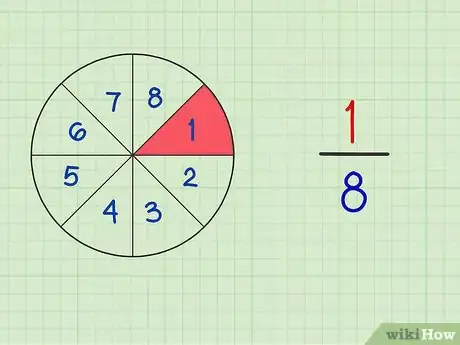
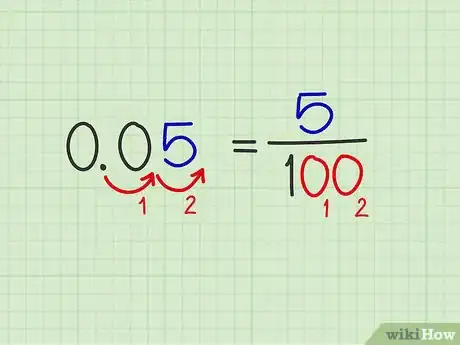
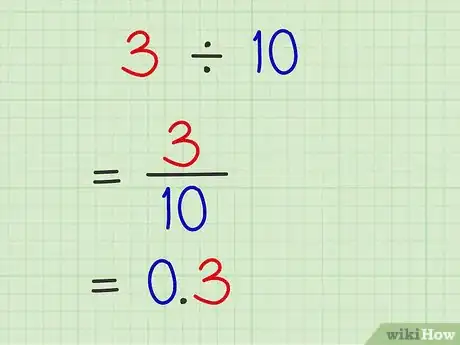
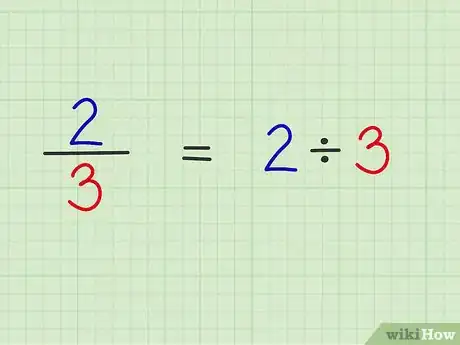
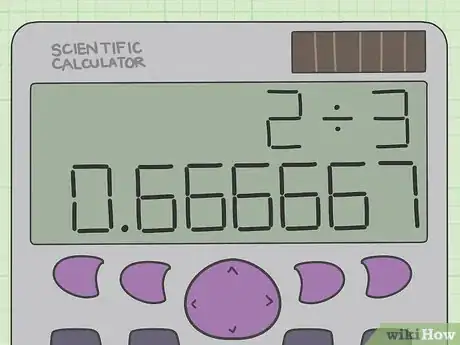
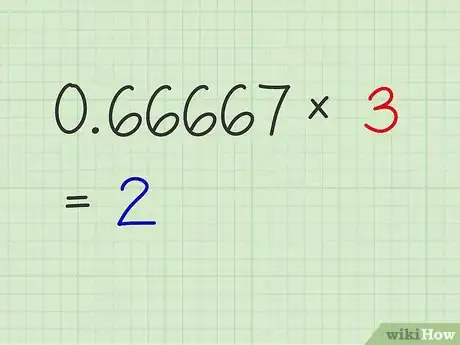
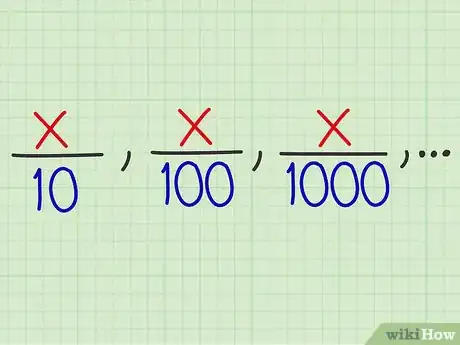
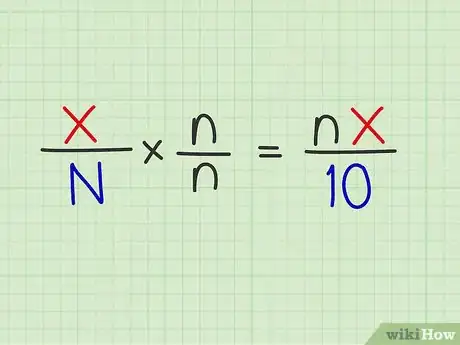
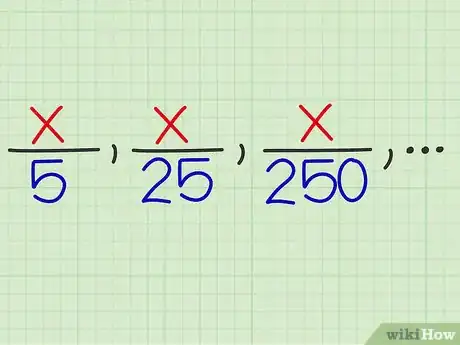
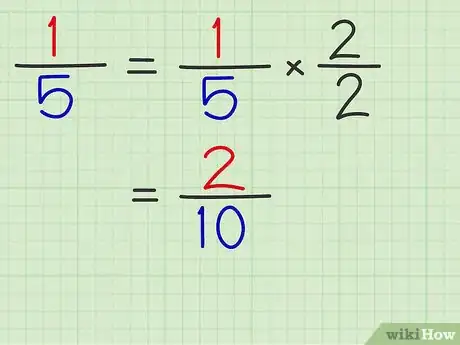
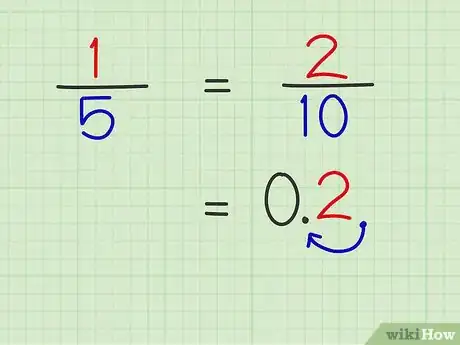
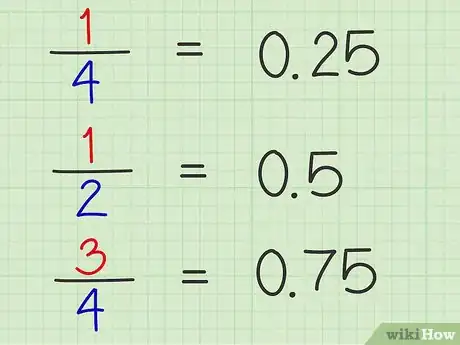
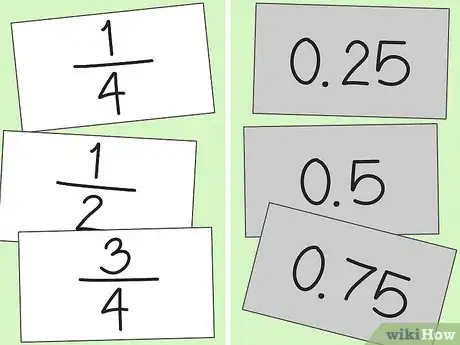
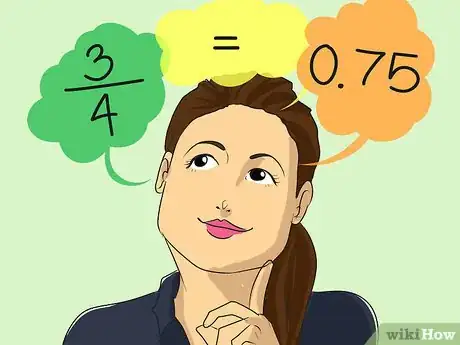
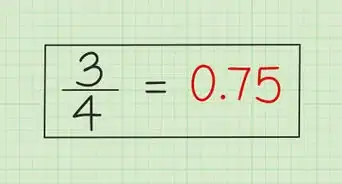
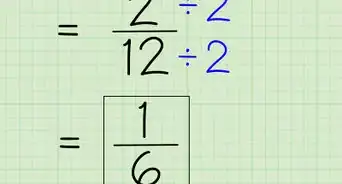
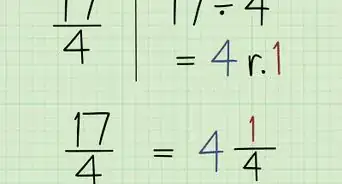

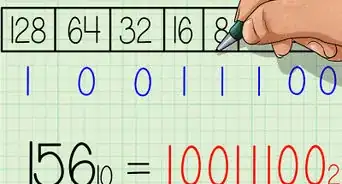
-to-Grams-(g)-Step-8-Version-5.webp)
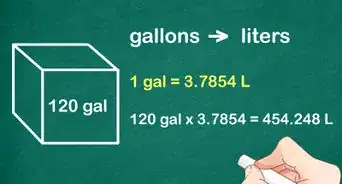
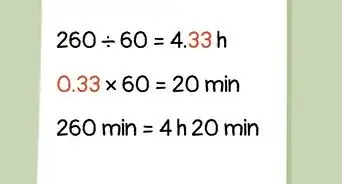
-to-Fahrenheit-(°F)-Step-6-Version-2.webp)
